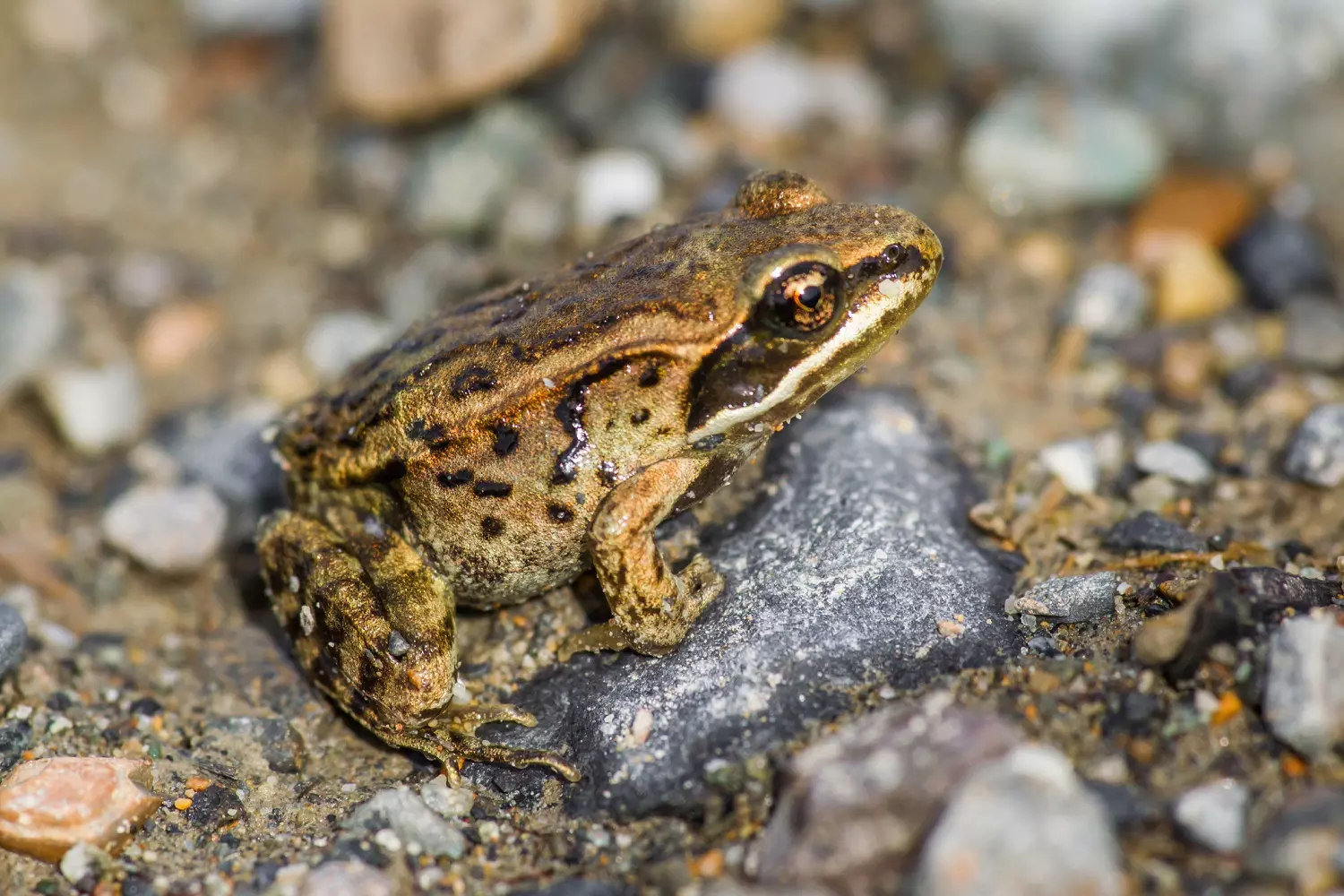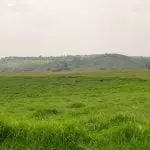God has created certain animals with the ability to survive the winter cold. Even in the very good world he originally created, God—being all knowing—put in some animals information in their genetic code to survive the winter cold. For mammals who produce their own heat, a nice fur coat is sufficient to stay warm. But what about animals that can’t produce body heat such as amphibians; how do they stay alive until the warm days of spring?
God has created some of these animals with the capability for their bodies to freeze in winter and then thaw again in spring without any ill effects. The science community calls this cryobiology: the ability for certain biological material or life forms to freeze and thaw without being harmed. Let’s look at an amazing creature our amazing Creator God created to not only survive but thrive in a place where an amphibian otherwise couldn’t.
The wood frog is around 1 ½ to 3 inches in length. It is brown, orange-red, or tan in color. There is a dark line in front of each eye and a dark blotch behind it. The wood frog’s range covers most of Canada and Alaska just south of the Arctic Circle, and south into the northeastern United States. These animals live mostly in woodlands, but also are found in grasslands and tundra.
Of course, in the northern part of its range the wood frog lives where the winter gets very cold. Most frogs that live in northern climates bury themselves in the mud at the bottom of a lake to prevent themselves from freezing. Not the wood frog.
When winter comes, this hardy little frog buries itself in a shallow hole on land. The leaf litter that covers the frog, and then a covering of snow offers little protection from temperatures that can go down to 35 degrees below freezing. In fact, there is so little protection that the frog soon freezes. The heart stops beating, the lungs and other organs stop working, and a large percentage of the water in the body freezes, including the blood.
The freezing of living tissue is generally a dangerous process because of the ice crystals that form as the water in the cells freezes. The crystals can rupture living tissue and cause damage to cell structure. This freezing can also cause water loss and dehydration of cells. If the ice crystals rupture the blood vessels, the cells in the body will no longer receive oxygen and nutrients.
God has created the wood frog to overcome these problems
As winter approaches the frog’s liver produces glucose which is transported by the blood and enters the cells of the frog where it acts as an antifreeze. The high concentration of glucose in the cells and blood prevent the frog’s interior from freezing. What this does is to allow freezing inside the body where the action of the forming ice crystals produces no harm, while producing an antifreeze in the form of glucose in areas where the ice crystals would cause permanent damage, perhaps killing the animal.
Even though the glucose prevents the blood and cells from freezing, the frog still feels like a frozen block of ice when it is at this stage of hibernation. This is because the water between the skin and muscle, water on the skin, and the water surrounding the organs in the abdominal cavity, and in the lens of the eye are all frozen solid.
Scientists still don’t understand what starts the heart beating again and how the other organs begin functioning when spring finally arrives. A single day is all the wood frog needs to thaw and return to normal activity. The thawing process starts from the inside of the body and moves outwards, bringing the frog out of its suspended animation. The frog is in surprisingly good shape after it’s thaw and starts moving around looking for it’s first meal of the season.
God created the wood frog with incredible abilities to not only survive, but thrive in areas where few amphibians could live.
And God said, “Let the land produce living creatures according to their kinds: the livestock, the creatures that move along the ground, and the wild animals, each according to its kind”. And it was so. Genesis 1:24






